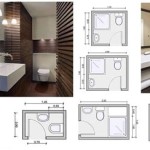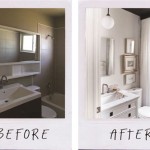Rustic Bathroom Sink Stands: Merging Functionality with Natural Aesthetics
Rustic bathroom sink stands are a popular choice for homeowners seeking to infuse their bathrooms with a warm, inviting, and nature-inspired aesthetic. These stands, often crafted from reclaimed wood, distressed metal, or a combination of both, offer a unique blend of functionality and visual appeal. They diverge from standard bathroom vanities, frequently providing open shelving or simple storage, allowing for a more airy and less cluttered feel. The rustic design aesthetic embraces imperfections and celebrates natural materials, creating a soothing and comfortable atmosphere within the bathroom space.
The allure of rustic design lies in its ability to evoke a sense of history and authenticity. Pieces often appear well-worn, carrying a story or an implied past. This approach resonates with many individuals who crave a connection to nature and a departure from the sleek, minimalist trends that have dominated interior design for decades. Rustic bathroom sink stands serve as focal points, drawing the eye and contributing significantly to the overall character of the bathroom.
Choosing the right rustic bathroom sink stand involves careful consideration of several factors, including the size of the bathroom, the desired storage capacity, the existing décor, and the preferred materials. Understanding the different types of stands available and their respective characteristics is crucial in making an informed decision that aligns with both functional needs and aesthetic preferences.
Understanding the Different Types of Rustic Bathroom Sink Stands
The market offers a diverse range of rustic bathroom sink stands, each with its own unique features and advantages. Categorizing these stands based on their construction, materials, and style can help narrow down the options and facilitate the selection process. Common types include reclaimed wood stands, metal-framed stands, repurposed furniture stands, and a combination of these elements.
Reclaimed wood stands are crafted from timbers salvaged from old barns, factories, or other structures. This type of stand is highly sought after for its unique grain patterns, knots, and imperfections, which contribute to its authentic rustic charm. Because each piece of reclaimed wood is unique, no two stands are exactly alike, ensuring a one-of-a-kind addition to the bathroom. These stands often feature a clear coat finish to protect the wood from moisture and prevent warping or damage. They can be designed with open shelving, drawers, or a combination of both, offering varying levels of storage capacity.
Metal-framed stands typically incorporate a metal base, usually wrought iron or steel, combined with a wooden or stone countertop. The metal frame adds a touch of industrial chic to the rustic aesthetic, creating a visually interesting contrast. The metal is often finished with a powder coating to prevent rust and corrosion, ensuring durability and longevity. The countertop material can range from natural stone, such as granite or marble, to wooden planks or even concrete, each offering a distinct texture and appearance. These stands frequently feature open shelving, emphasizing a minimalist and airy design.
Repurposed furniture stands involve transforming existing pieces of furniture, such as dressers, cabinets, or tables, into functional bathroom sink bases. This approach is particularly appealing for individuals seeking a sustainable and eco-friendly option. Repurposing furniture not only reduces waste but also adds a unique and characterful element to the bathroom. The furniture piece is typically modified to accommodate the sink and plumbing, and the finish is often distressed or aged to enhance the rustic aesthetic. This type of stand offers a high degree of customization and allows for the incorporation of personal style and preferences.
Key Materials Used in Rustic Sink Stands
The choice of materials is paramount in achieving the desired rustic aesthetic and ensuring the durability and longevity of the bathroom sink stand. The selection of wood, metal, and countertop materials significantly impacts the overall look and feel of the piece. Consideration of the environmental impact and sustainability of the materials is also becoming increasingly important.
Reclaimed wood is a popular choice for rustic sink stands due to its inherent character and eco-friendly nature. Different types of reclaimed wood, such as pine, oak, and maple, offer varying grain patterns and color tones. The imperfections in the wood, such as nail holes, knots, and saw marks, are embraced as part of its unique charm. Reclaimed wood is typically sourced from old barns, factories, or demolished buildings, giving it a rich history and a story to tell. It is crucial to ensure that the reclaimed wood is properly treated and sealed to prevent moisture damage and insect infestation.
Metal, particularly wrought iron and steel, is often used for the base or frame of rustic sink stands. These metals provide a sturdy and durable foundation while adding an industrial touch to the design. The metal is typically finished with a powder coating to prevent rust and corrosion, ensuring longevity in the humid bathroom environment. Different finishes, such as matte black, brushed nickel, and oil-rubbed bronze, can be used to complement the overall aesthetic. The metal can be shaped into various designs, ranging from simple and minimalist to more elaborate and decorative.
Countertop materials for rustic sink stands vary widely, depending on the desired look and functionality. Natural stone, such as granite, marble, and slate, is a popular choice for its durability and natural beauty. These stones offer unique veining patterns and color variations, adding a touch of luxury to the rustic aesthetic. Wooden countertops, crafted from solid wood or butcher block, provide a warm and organic feel. Concrete countertops are also gaining popularity for their industrial chic and customizable nature. The choice of countertop material should be carefully considered based on its durability, maintenance requirements, and aesthetic appeal.
Integrating Rustic Sink Stands into Bathroom Design
Successfully integrating a rustic bathroom sink stand into the overall bathroom design requires careful planning and consideration of the existing décor. The stand should complement the other elements in the bathroom, such as the flooring, wall color, and fixtures, to create a cohesive and harmonious space. Factors such as the size of the bathroom, the desired style, and the functional needs should be taken into account.
In smaller bathrooms, a smaller rustic sink stand with open shelving can help create a sense of spaciousness and airiness. Opting for lighter wood tones and minimalist metal frames can further enhance the feeling of openness. Mirrors can be strategically placed to reflect light and create the illusion of more space. Avoiding clutter and keeping the surfaces clean and organized is crucial in maintaining a sense of calm and order.
In larger bathrooms, a larger rustic sink stand with ample storage space can serve as a focal point and provide a significant design statement. Darker wood tones, heavier metal frames, and elaborate countertop materials can be used to create a more dramatic and luxurious feel. Adding decorative elements, such as vintage mirrors, antique lighting fixtures, and natural accessories, can further enhance the rustic aesthetic.
The choice of fixtures, such as faucets and showerheads, should also complement the rustic sink stand. Oil-rubbed bronze, brushed nickel, and matte black finishes are popular choices for their ability to blend seamlessly with the rustic aesthetic. Simple and classic designs tend to work best, avoiding overly modern or ornate styles. The color palette of the bathroom should also be carefully considered, with neutral tones, such as white, gray, and beige, often used as a base, accented by natural colors, such as greens, browns, and blues.
Lighting plays a crucial role in creating the desired ambiance in the bathroom. Warm and soft lighting can enhance the cozy and inviting feel of the rustic design. Installing dimmer switches allows for adjusting the lighting to suit different moods and needs. Incorporating natural light whenever possible is also highly beneficial, as it brings out the natural beauty of the materials and creates a more vibrant and welcoming space.
Ultimately, the key to successfully integrating a rustic bathroom sink stand into the bathroom design is to create a cohesive and harmonious space that reflects personal style and preferences. By carefully considering the size of the bathroom, the desired aesthetic, and the functional needs, it is possible to create a beautiful and inviting bathroom that embraces the warmth and charm of rustic design.

Rustic Chunky Solid Wood Bathroom Washstand Vanity Sink Unit

Rustic Bathroom Vanity Kreg Tool

Rustic Bathroom Vanity With Sliding Barn Doors Remodeling Farmhouse Cabin Weathered Distressed Wood

Rustic Bathroom Vanity Kreg Tool

New Solid Chunky Wood Rustic Bathroom Sink Basin Vanity Unit

Rustic Bathroom Vanity With Sliding Barn Doors Remodeling Farmhouse Cabin Weathered Distressed Wood

Reclaimed Wood Bathroom Vanity Unit Gt Carpentry Building Services

Rustic Vanity Unit Vintage Wooden Bathroom Sink Units

Rustic Chunky Solid Wood Bathroom Washstand Vanity Sink Unit

Rustic Bathroom Vanities Ana White
Related Posts







